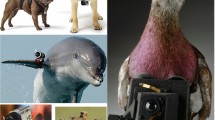Abstract
In the paper we consider a problem of the next view planning using stereo vision. Our objective is to resolve the ambiguities of occluded regions — parts of the scene which are acquired only in a one of the images of the two stereo views. We assume a general scene. The next view problem is first analyzed under the assumption that the next camera location can lie only in the particular epipolar plane, then we extend the analysis to a general set of possible camera locations. An important feature of the proposed approach is that it does not require 3-D reconstruction of the scene. Experimental results demonstrate the proposed solution.
This work was supported in part by the Austrian Science Foundation (FWF) under grant S7000.
Access this chapter
Tax calculation will be finalised at checkout
Purchases are for personal use only
Preview
Unable to display preview. Download preview PDF.
Similar content being viewed by others
References
S. E. Chen and L. Williams. View Interpolation for Image Synthesis. Proc. SIG-GRAPH 93. In Computer Graphics 1993, pages 279–288.
D. Geiger, B. Ladendorf, and A. Yuille. Occlusions and Binocular Stereo. International Journal of Computer Vision, 14:211–226,1995
J. J. Little and W. E. Gillett. Direct Evidence for Occlusion in Stereo and Motion. In Proceedings of First European Conference on Computer Vision, pages 336–340, 1990.
K. N. Kutulakos and C. R. Dyer Global Surface reconstruction by Purposive Control of Observer Motion. Tech. Rep. 1141 Computer Sciences Department, University of Wisconsin-Madison, April 1993. Available via ftp from ftp.cs.wisc.edu.
S. M. Seitz and C. R. Dyer. Photorealistic Scene Reconstruction by Voxel Coloring. In Proceedings on Computer Vision and Pattern Recognition, pages 1067–1073, June 1997, Puerto Rico.
S. M. Seitz and C. R. Dyer. View Morphing. In Proceedings of Computer Graphics, pages 21–30, Annual Conference series, 1996.
T. Werner, R.D. Hersch, and V. Hlaváĉ. Rendering Real-World Object Without 3-D Model In Proceedings of 6th International Conference, CAIP'95, pages 146–153, 1995.
Author information
Authors and Affiliations
Editor information
Editors and Affiliations
Rights and permissions
Copyright information
© 1999 Springer-Verlag Berlin Heidelberg
About this paper
Cite this paper
Maver, J. (1999). Which Slightly Different View Is the Right One?. In: Solina, F., Leonardis, A. (eds) Computer Analysis of Images and Patterns. CAIP 1999. Lecture Notes in Computer Science, vol 1689. Springer, Berlin, Heidelberg. https://doi.org/10.1007/3-540-48375-6_54
Download citation
DOI: https://doi.org/10.1007/3-540-48375-6_54
Published:
Publisher Name: Springer, Berlin, Heidelberg
Print ISBN: 978-3-540-66366-9
Online ISBN: 978-3-540-48375-5
eBook Packages: Springer Book Archive




